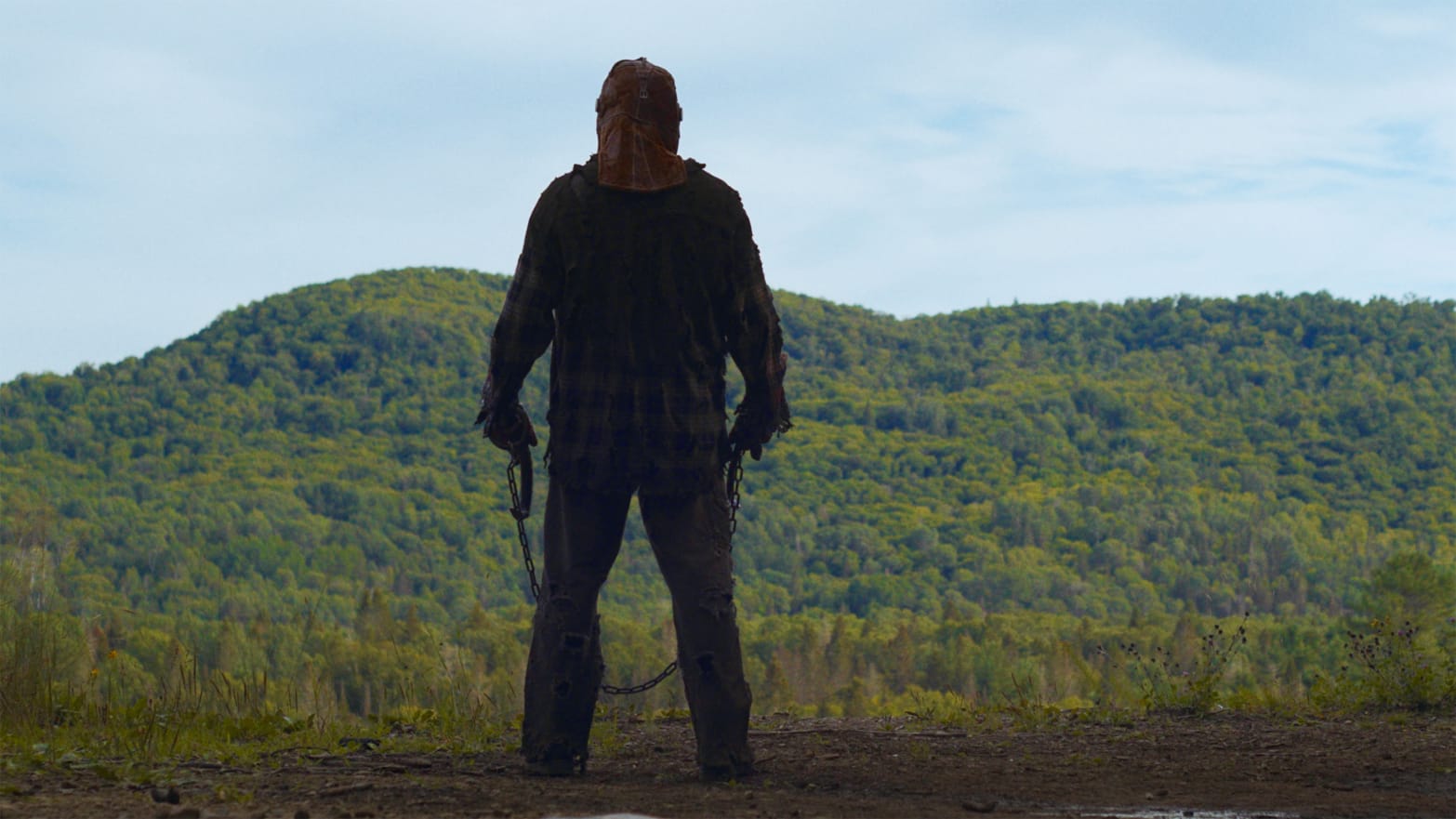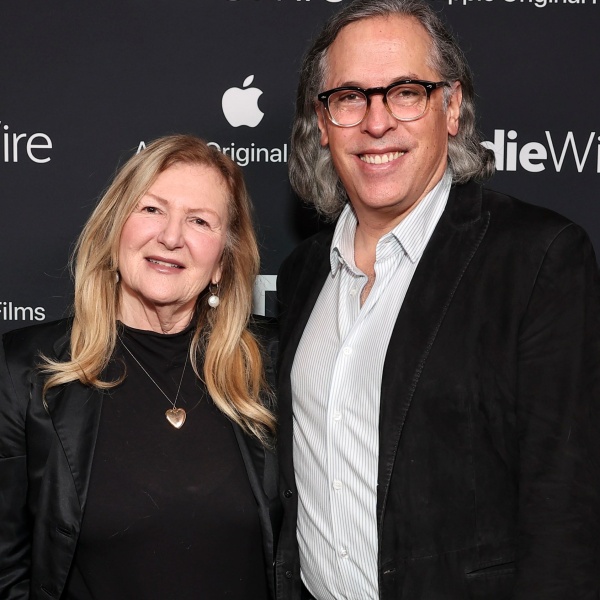A high-concept horror movie so casual that it sometimes feels like it doesn’t have any concept at all, Chris Nash’s “In a Violent Nature” is an “ambient slasher” that might owe more to the likes of Terrence Malick and Gus Van Sant than it does to Jason Voorhees and Michael Myers — at least until the part when the unstoppable teen-murderer disembowels a female victim and then twists her entire head through the giant hole he’s carved in her stomach.
Told from its killer’s point of view (except when it’s not), this anemic but formally compelling genre exercise strips the whole madman in a mask routine down to its skeleton. It starts, of course, with some doomed kids in the woods, their voices disembodied long before their limbs will get the chance. Nash frames them out in favor of focusing on the gold necklace the characters find dangling in an abandoned shack; a few moments after the boys nab the jewelry and leave, a hulking bald man with bloody knuckles and crusted head wounds crawls out of the dirt and begins lumbering toward civilization.
Johnny, as we’ll soon come to know him, will obviously find a way to catch up with the fresh meat — and their girlfriends — despite the fact that he moves at “It Follows” miles per hour, and it goes without saying that he’ll leave behind a few bloody clues about his threadbare backstory along the way. But the been-there-stabbed-that tropiness of Nash’s debut is meant to be more of a feature than a bug, as “In a Violent Nature” derives its semi-hypnotic power from the disconnect it creates between the sheer movienessof what happens and the somnambulant nonchalance with which it all goes down.
The effect is interesting in theory, but largely unsatisfying in execution (pun very much intended). Played by Ry Barrett, Johnny walks around the woods like a braindead killing machine as Pierce Derks’ camera follows behind him for minutes on end, the soundtrack completely silent save for the steady chorus of leaves crunching underfoot; while Nash stops well short of anything that might be described as “slow cinema,” “In a Violent Nature” definitely isn’t in a hurry to get anywhere, which would be more of a problem if it had anywhere to go.
When night falls and all of Johnny’s next victims gather around a bonfire to swap scary stories, the camera drifts away from the killer hiding in the darkness and circles the teens as one of them launches into an expository monologue that contains about 80% of the film’s paint-by-numbers mythology (Johnny was an intellectually challenged outsider who was bullied to death, etc. etc. amen). I couldn’t — and still can’t — wrap my head around why Nash would so quickly and so needlessly break the strict formal spell he’s cast until that point in order to stick us with a scene that stops the whole thing in its tracks. If the rest of “In a Violent Nature” feels like it’s just trying to get the air back in a tire that it punctured on purpose, well, it’s a good thing that some of the kills are so excellent.
The first murder sets the tone, even if you can tell that Nash is just warming up. It’s a simple head-sliced-in-half routine, delivered with a pronounced lack of the manufactured tension that most slashers would bring to such a scene. There’s no music, no jump-scares, no waiting for the inevitable; a kid separates from the pack in order to take a piss, and Johnny seizes the opportunity to take his life. Each subsequent kill proves to be a bit more elaborate than the last, but all of them are delivered with the same cinematic insouciance. That disconnect speaks to the potential of Nash’s conceit, as it viscerally conveys the depths of Johnny’s dispassion, and there’s something queasy about understanding just how little this killer cares about his victims (a dispassion that is emphasized further when Johnny dons an old firefighter’s mask).
I was sickened and exasperated in equal measure to realize how much I could relate to that feeling. Johnny’s teenage victims barely have names, let alone personalities. There are two girls whose lakeside flirtation is rudely interrupted with extreme prejudice. There are some boys who discover the many different uses of rusty dry hooks. There’s another character, whose identity is worth protecting, who shows up just in time to deliver the story’s missing pieces before he’s turned into missing pieces of his own.
A final girl of sorts emerges in Kris (the very capable Andrea Pavlovic), but her full importance isn’t clear until the film’s extended climactic sequence, which, at long last, effectively cashes in on Nash’s ambient approach with a sequence that suddenly finds an almost unbearable degree of tension in the distance between the horror of what Kris has witnessed and the lack of urgency that her story inspires from other people. It’s a breathless ending, but the juice hardly feels worth the squeeze by the dying minutes of a noble failure that trims all of the trappings off of the slasher genre until there’s nothing left but a monster, an old mask, and — in Nash — a seriously promising talent who could use a little bit more to work with next time.
Grade: C
“In a Violent Nature” premiered at the 2024 Sundance Film Festival. Shudder will release it later this year.






